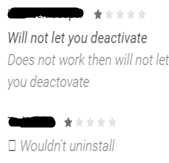

Contents • • • • • • • • • • • • • • • • To introduce this material accurately, I give you a quote from the developers web site. Horde Groupware Webmail Edition is a free, enterprise ready, browser based communication suite. Users can read, send and organize email messages and manage and share calendars, contacts, tasks and notes with the standards compliant components from the Horde Project. Horde Groupware Webmail Edition bundles the separately available applications IMP, Ingo, Kronolith, Turba, Nag and Mnemo.
Quote from: 2011 Oct 09 The Groupware features not mentioned here include: • Task Management • Event Scheduling • Contacts Management • Calendar • Notes The software is written primarily in PHP, and is compatible with MySQL, PostgreSQL, Oracle, and Microsoft SQL-Server. Assumptions and Conventions Assumptions For the purposes of this guide, it will be assumed that you are: • using a fresh install of Ubuntu 10.04.3 LTS (32 bit Server), • using a working Apache2, PHP, MySQL server, • using /var/www/ as your web root, • working entirely from the command line. In theory not much will change for 64 bit servers, but I do not have one. Typographic Conventions Text You Have To Change will be listed in italics before the block in which it appears. Code will be placed in blocks like this.
Locations (Directories) of Significance • /build/buildd/php5-5.3.2/pear-build-download This is where PECL currently places its downloaded packages. I will refer to this as the PECL directory. • /usr/lib/php5/20090626+lfs/ This is where you PHP extensions go once created, this is called the extension_dir in the php.ini file and in this document. • /etc/php5/apache2 The location of your php.ini file. • /etc/apache2/conf.d The location at which your php extensions config file will be created Installing Necessary Packages Since Ubuntu is not meant to be a developer platform out of the box, some packages are missing. The first step is installing those packages.
Sudo apt-get install php5-dev php-pear php5-tidy libidn11-dev libmagickwand-dev libmagick++2 imagemagick libsasl2-2 libsasl2-dev php5-gd openssl libssh2-php libphp-jpgraph Locate The PHP Extension Directory The directory, if it did not exist before, it does now that you have added php-tidy. So execute this code to find it: sudo find / -iname tidy.so Now you know where your extension_dir is. Update Pear Communication Protocols sudo pecl channel-update pear.php.net sudo pear channel-update pear.php.net Install The Required Modules Move to where we want to be and install the first package: cd /build/buildd/php5-5.3.2/pear-build-download sudo pecl install Fileinfo sudo tar -xvf./Fileinfo-1.0.4.tgz cd Fileinfo-1.0.4 sudo phpize fileinfo sudo./configure sudo make Now that the module exisist lets get it to the right spot and do some clean up: cd./modules sudo cp./fileinfo.so /usr/lib/php5/20090626+lfs/ cd. Gavin James Remember Me Mp3. /. Sudo rm -R./* This one is a pain as well: sudo pecl install channel://pecl.php.net/sasl-0.1.0 sudo tar -xvf./sasl-0.1.0.tgz cd./sasl-0.1.0 sudo phpize sasl sudo./configure sudo make cd./modules sudo cp./sasl.so /usr/lib/php5/20090626+lfs/ cd./. Sudo rm -R./* OK, those two were the hardest. Now the easy stuff begins.
Uninstalling all Horde (4+) PEAR packages. Sometimes you want to start a Horde installation from scratch because something went wrong during installation. If you did not install into a separate PEAR directory, of if that separate installation went wrong, you cannot simply remove one folder to have all Horde components installed. Joel G Mathew. Joel G Mathew, known in tech circles by the pseudonym Droidzone, is an Android and Linux enthusiast. His favorite pastime is grappling with GNU.